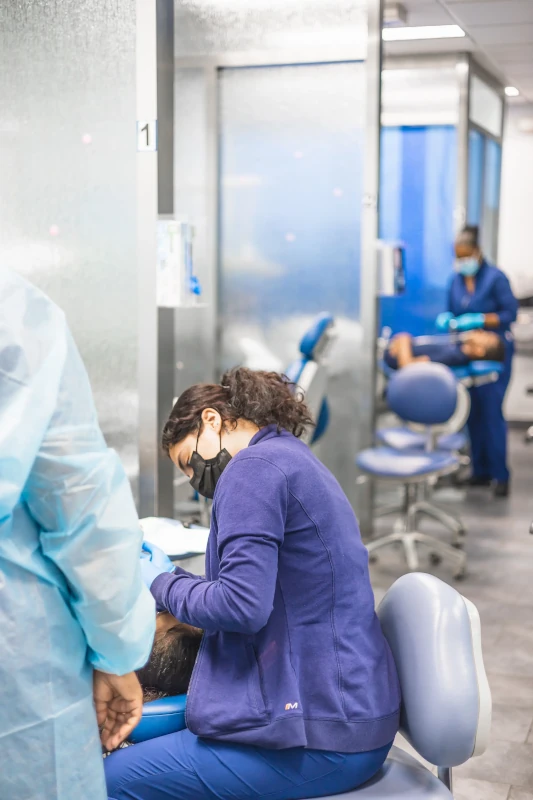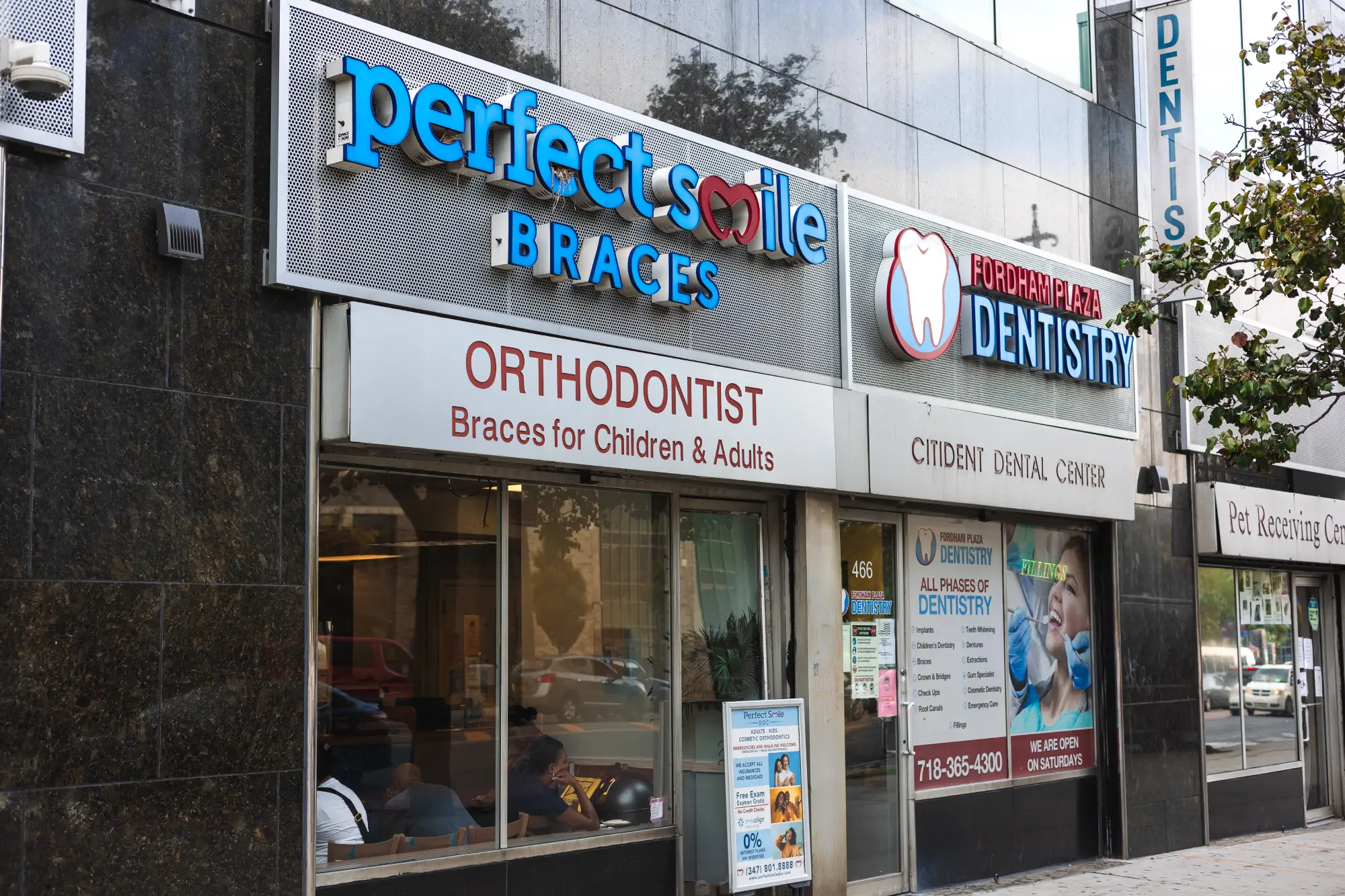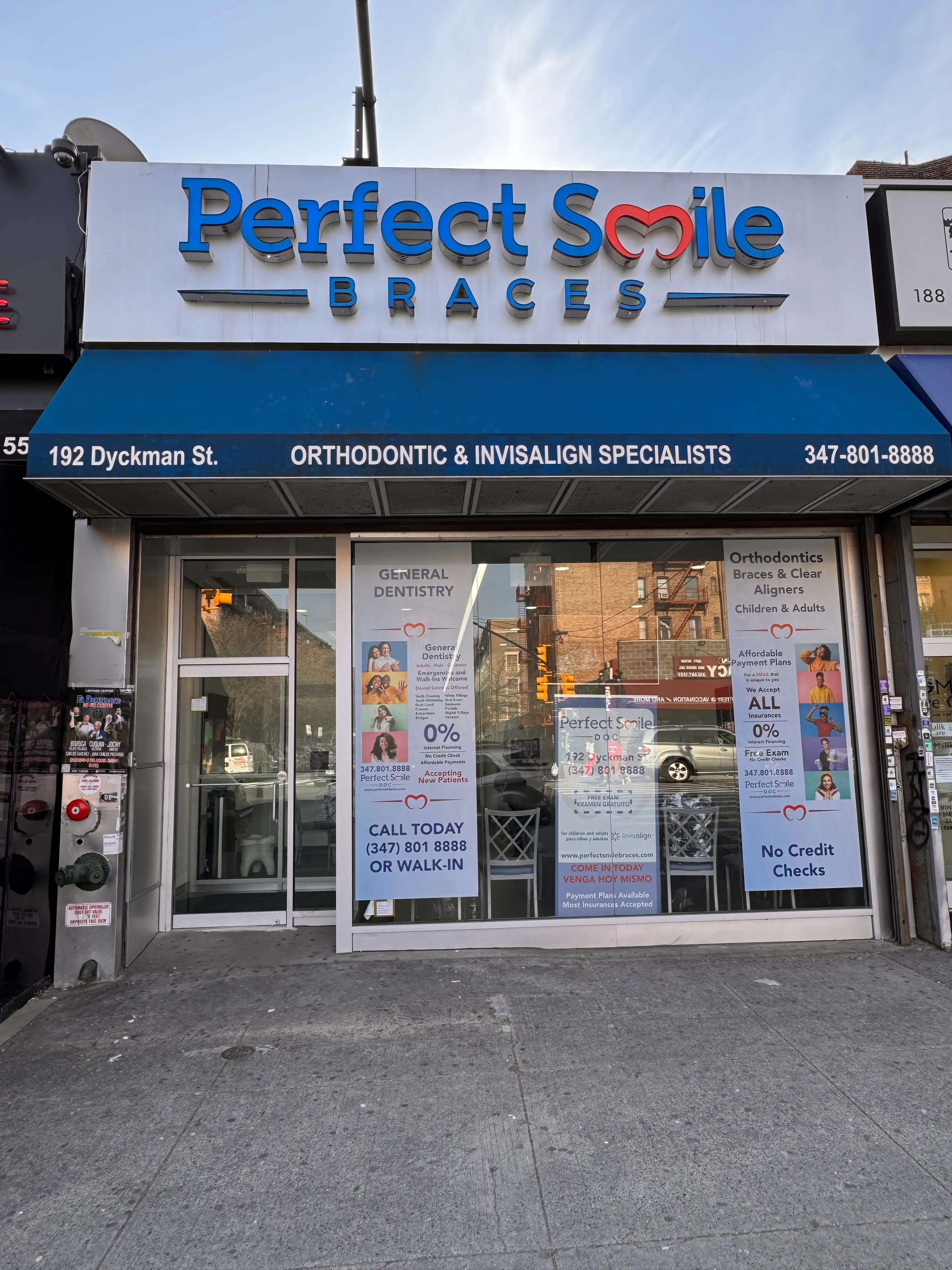At Perfect Smile Braces, we provide clear, up-to-date information to make your orthodontic treatment smooth and comfortable.
Below, we answer common questions about treatment duration, appointment frequency, and braces and aligner care. We also offer tips on patient compliance, oral hygiene, and what to expect during treatment.
The duration of your treatment can vary greatly based on your specific needs and the type of orthodontic treatment you choose.
While treatment can take anywhere from 6 months to 3 years, factors such as the severity of your dental issue, the type of treatment, and your compliance with the orthodontist's recommendations all determine the exact timeline.
- Initial Consultation: Discuss your orthodontic needs and explore treatment options.
- Treatment Planning: A custom treatment plan is created using X-Rays, scans, and records.
- Treatment: Braces or aligners are placed to begin correcting your teeth.
- Regular Adjustments: Visits are scheduled every 4 to 8 weeks for necessary adjustments and progress monitoring.
- Completion: Once your teeth have reached their desired position, braces are removed, or aligner use ends.
- Retention: Wearing a retainer will help you maintain the results and prevent regression.
Depending on your treatment plan, appointments are typically scheduled every 4 to 8 weeks. Regular visits allow for necessary adjustments and ensure your treatment is progressing as planned.
Some discomfort is normal, especially after adjustments, but it is usually mild and temporary. However, if you’re feeling persistent or severe pain, please reach out to us. We’re here to help and make sure you’re comfortable and your treatment is working as it should.
Discomfort can be managed with over-the-counter medication, using orthodontic wax to cover sharp edges, and rinsing with warm salt water to soothe any irritation.
Braces generally require adjustments every 4 to 8 weeks to ensure your treatment progresses effectively, while aligners are changed every 1 to 2 weeks, depending on your treatment plan.
- Brush after every meal using a soft-bristle toothbrush and fluoride toothpaste.
- Use a floss threader or orthodontic floss to clean between teeth and braces.
- Rinse and clean aligners regularly with lukewarm water to keep them clear and bacteria-free.
You should avoid hard, sticky, and sugary foods that can damage braces or aligners. Common examples include nuts, popcorn, caramel, and chewing gum.
Always remember to remove your aligners when planning to eat or drink anything other than water, as food and beverages can stain or warp the aligners, affecting your treatment and oral health.
If something breaks or feels uncomfortable, contact our office as soon as possible to schedule an emergency appointment. In the meantime, use orthodontic wax to cover sharp edges to prevent irritation.
Expect straighter teeth, improved bite alignment, and enhanced oral health. Orthodontic treatment can also lead to a more confident smile and better teeth and jaw function.
Yes, retainers are essential to maintaining the results of your treatment. They are typically worn full-time at first and then transitioned to nighttime use over time to prevent teeth from shifting back to their original positions.
While wearing braces or aligners, your teeth will gradually move into their correct positions. You may notice progressive improvement, leading to a beautifully aligned smile by the end of your treatment.
Costs depend on the type and duration of treatment. During your initial consultation, you will receive a detailed cost estimate and payment options that fit your budget.
Many insurance plans cover a portion of orthodontic treatment. We will help you understand your coverage and submit the necessary claims to ensure you get the maximum benefits available.
We offer various payment plans, including monthly installments, to make treatment affordable. We also accept major credit cards and offer financing options to suit your financial needs.
Yes, you can continue playing sports and instruments while undergoing orthodontic treatment. We recommend using a mouthguard for sports to protect your braces or aligners and practice adjusting to your new dental appliances with your musical instrument.
You might experience a short adjustment period, but most people get used to it quickly. Keeping up with good oral hygiene and making a few dietary changes are key to making sure your treatment goes smoothly.
Orthodontic treatment is generally safe, but there are a few risks like tooth decay, gum disease, and minor injuries from braces.
By taking good care of your braces, keeping up with regular check-ups, and maintaining excellent oral hygiene, you can greatly reduce these risks and keep your smile on track.
If you have a loose bracket or wire, use orthodontic wax to cover any sharp edges, and contact our office as soon as possible to schedule an emergency appointment.
Severe pain, significant injury to the mouth, or a broken appliance that causes discomfort should be addressed immediately. Contact our office for emergency care if you experience any of these issues.







